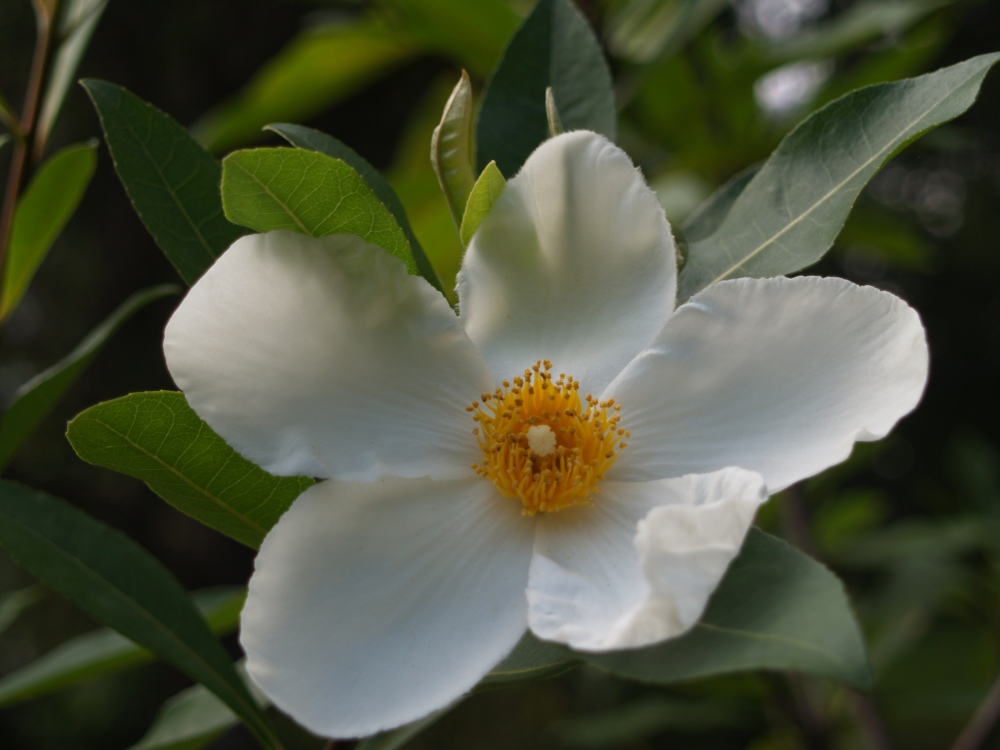Two gordlinias (x Gordlinia grandiflora) have recovered nicely after defoliating completely in colder than average temperatures last winter. The evergreen, shrubby trees are of questionable cold hardiness, and certainly I would not have been surprised if both had died. Now, I’m pleased with their rejuvenation, though only one has grown vigorously.
The gordlinias are planted at nearly opposite ends of the garden, and while the one in dry ground and a bit of afternoon shade is growing contentedly, the other is planted in damper ground, and its full recovery is more questionable. This one was planted a year after the first as a hedge against the nearby Franklinia (Franklinia alatamaha) failing to survive in similarly damp soil. It was planted in the driest spot I could find in the damp lower garden, so mostly I attribute its lack of vigor to being a younger tree that was stressed by the damp soil and more severely impacted by the cold.

The Franklinia and gordlinias have flowers (above) and foliage that are nearly identical, which is not terribly surprising since gordlinia was hybridized with Franklinia and the southeastern native Loblolly bay (Gordonia lasianthus). The two trees flower at the same time, and autumn color of the evergreen gordlinia foliage (below) is close in appearance to the leaf color of the deciduous Franklinia.

The branching and bark of the two trees are similar in appearance, and I can only hope that gordlinia proves less problematic than Franklinia, which suffered varied maladies long before soil in this section of the garden became damp. Elongated branches have split under their weight, and several have required removal so that the tree is somewhat awkward in appearance.
The gordlinias were planted from small containers into a clump of three trunks, and with low branches the appearance is more of a shrub than tree. With more growth in the next few years I will prune out lower limbs to expose the trunks, but gordlinia will never have the strong upright growth of a tree.
While I do not have high hopes for the gordlinia in the damp lower garden, I’m thrilled that one is healthy. While Franklinia is also a superb tree, it seems that it will be too short lived, and perhaps gordlinia will provide the summer flowers and autumn foliage without the problems.
I have always wanted to add a few of these to my Raleigh, North Carolina garden…
I was fortunate to find a batch of gordlinias in an evaluation plot of a nursery. The verdict was that the trees did not grow to their expectations, and the market value was too limited to continue growing them. But, their loss was my gain. There are many exceptional, but uncommon trees that are available only through mail order from specialty growers, and thus only in small sizes.